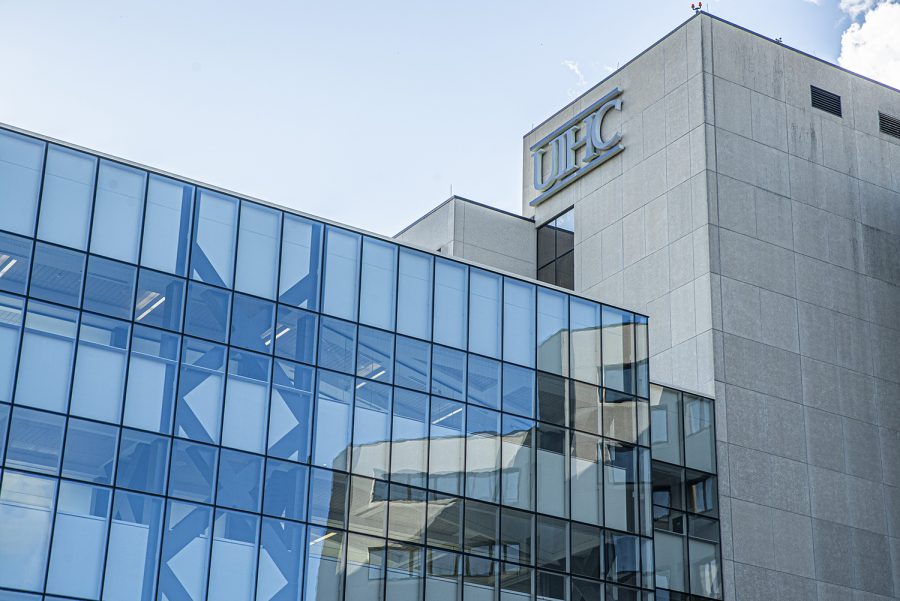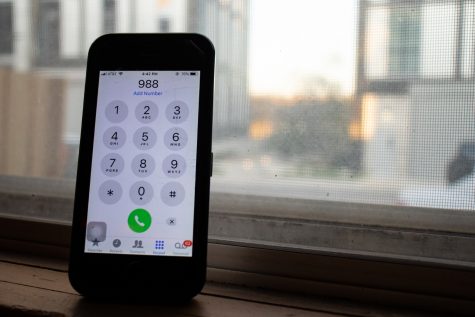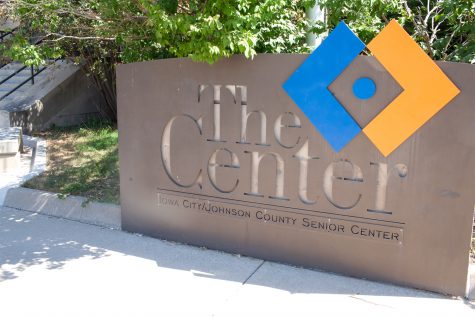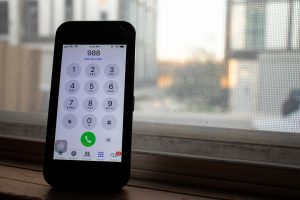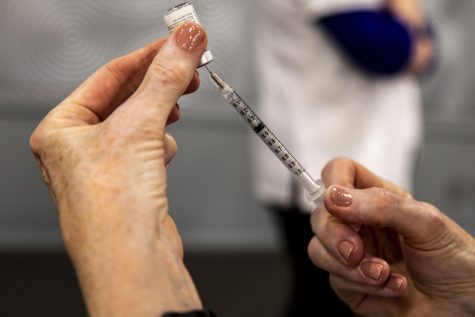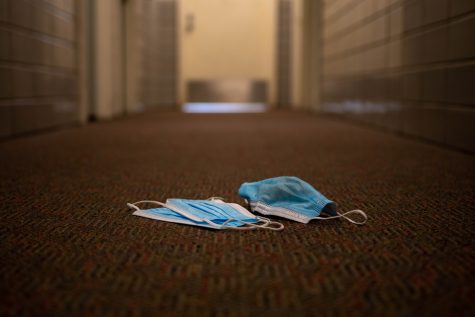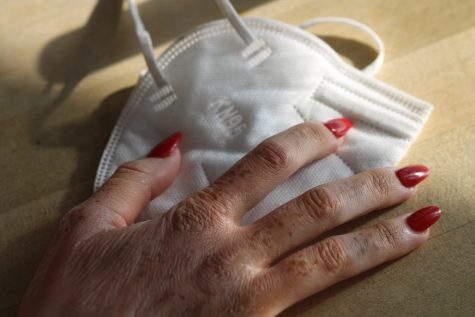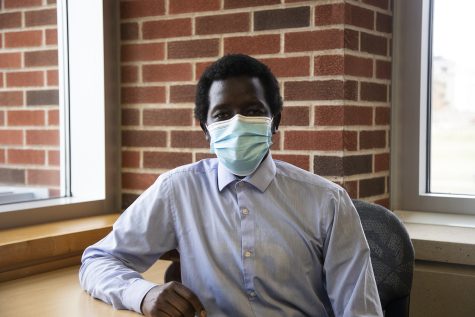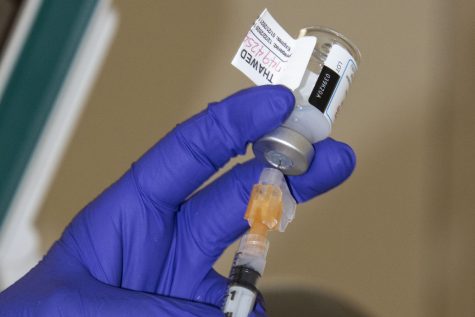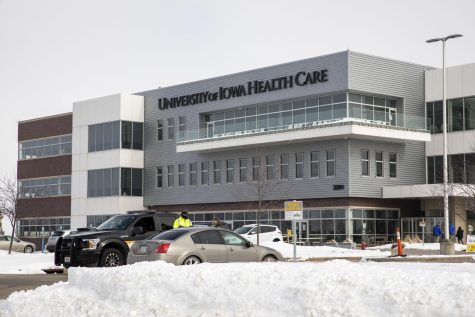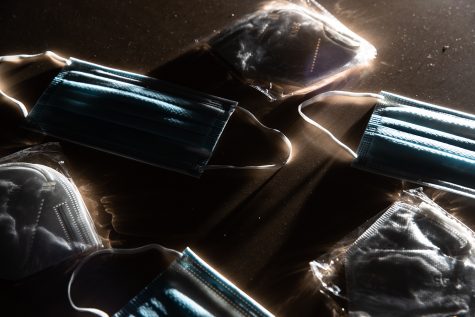UIHC CEO says to rethink holiday plans amid ‘worst chapter’ of COVID-19 pandemic
University of Iowa Hospitals and Clinics CEO Suresh Gunasekaran said Iowa hospitals are experiencing a third peak in the coronavirus pandemic, with this being the worst so far. With a 27 percent positivity rate in Johnson County on Monday, health-care officials are calling on Iowans to stop the spread of the disease.
University of Iowa Hospitals and Clinics are seen on Tuesday, June 23, 2020.
November 3, 2020
Health-care officials are calling on Iowans to avoid in-person holiday gatherings as the state experiences a record number of hospitalizations during the pandemic.
As Iowans prepare for Thanksgiving, Christmas, Hanukkah, and other late winter holiday festivities, University of Iowa Hospitals and Clinics Chief Executive Officer Suresh Gunasekaran, and other health officials are encouraging people to rethink their plans with family and friends who live outside of their households to prevent overwhelming hospitals.
“I think it’s time for us to get prepared and make some changes,” Gunasekaran said. “I really think this is a question of personal responsibility and accountability and caring for one another in the community.”
Gunasekaran said everyone needs to do their part to stop the spread of the infection and the hospitalization rates. If Iowans don’t take these precautions, hospitals may run out of beds for patients, he said.
In the event that this happens, UIHC staff is looking into using space inside the hospital, including within Stead Family Children’s hospital.
Gunasekaran called it the worst chapter of the pandemic in a statement released on Monday. According to UI Health Care there are currently 31 COVID-19 adult inpatients at the sprawling research hospital and there have been 690 inpatients since March. UIHC reported a 27 percent positivity rate in COVID-19 test results.
He said the high amount of hospitalizations is concerning because of the increase in respiratory illnesses during the winter.
“When you move into the fall and winter months, you’re going to see a lot higher hospitalizations for conditions that aren’t COVID,” Gunasekaran said. “When you see these kinds of COVID hospitalization rates, you have to start getting concerned because there are other health-care conditions that hospitals need to take care of.”
Since more beds are filled by patients who have COVID-19, other procedures are put on hold for days, weeks, and sometimes months, Gunasekaran said. If Iowans don’t practice health and safety procedures, it will take longer for non-emergent patients to get the care they need, he said.
UIHC usually has about 90 to 95 percent of beds occupied by patients, which has been steady since the start of the pandemic, Gunasekaran said. However, his concern lies with limited staff members, he said.
“The bed availability is not the only thing that matters — it’s the staff availability as well. As the community positivity rate increases, the number of health-care workers that will get infected increases as well,” Gunasekaran said. “The question at the end of the day is are all hospitals able to staff those beds and are those beds of the right skill level to take care of the patients that are needed.”
Gunasekaran said the increasing rate of infection in the community leads to more COVID-19 patients in hospitals. Statewide, 730 patients are currently hospitalized in Iowa, according to the state’s COVID-19 dashboard. In the last couple weeks, the state has reported several days with record hospitalizations.
According to state-reported COVID-19 data updated by The Daily Iowan, there are 6,288 total positive cases in Johnson County since the Iowa Department of Public Health started recording case numbers, as of Monday. This is a 53 person increase from Sunday.
Interactive infographic by Kelsey Harrell/The Daily Iowan
The rise in hospitalizations has led to a rise in the amount of UIHC staff needing to quarantine because of COVID-19 exposures, Gunasekaran said. Out of about 12,000 employees, 50 to 150 employees are isolating or in quarantine at any given time, he said.
There are a few reasons for this high case number and recent spike in cases, Johnson County Public Health Community Health Manager Sam Jarvis said.
“There are certainly a lot of factors at play, so it’s hard to tease out what the problem is. As the weather gets colder, it draws persons to gather indoors,” Jarvis said. “There are more indoor gatherings with lots of persons, especially with the holidays coming up.”
Gunasekaran said the hospitalization rate could be related to people not taking the virus seriously. He said he’s worried that people are spreading the virus without reporting it.
“Anytime you see this kind of a rising curve and this kind of a positivity rate, it tells you there’s probably more cases in the community and we probably should be doing more testing,” Gunasekaran said. “We’re concerned that there’s a higher positivity rate in the public than we currently reflect, which is usually very true when you’re in this exponential increase in cases.”
As Iowans prepare for the holiday season, health-care professionals are encouraging people to rethink their plans with family and friends who live outside of their households.
“We’re tired of using some of these phrases because it’s been a long pandemic and a long year, but we need to flatten the curve,” Gunasekaran said. “I think it’s time to return to those behaviors that flatten the curve.”



